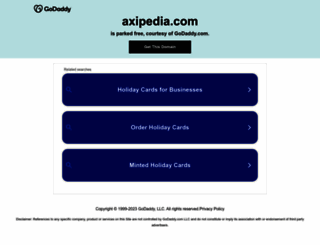Discover the Latest Innovations in Digital Advancements
Page Load Speed
3.9 sec in total
First Response
196 ms
Resources Loaded
1.8 sec
Page Rendered
1.9 sec

About Website
Visit axipedia.com now to see the best up-to-date Axipedia content and also check out these interesting facts you probably never knew about axipedia.com
Discover the Latest Innovations in Digital Advancements
Visit axipedia.comKey Findings
We analyzed Axipedia.com page load time and found that the first response time was 196 ms and then it took 3.7 sec to load all DOM resources and completely render a web page. This is a poor result, as 65% of websites can load faster.